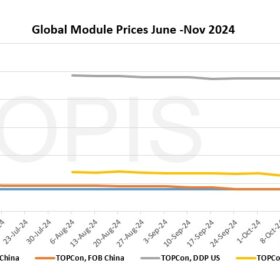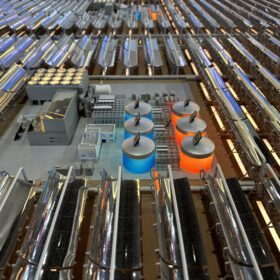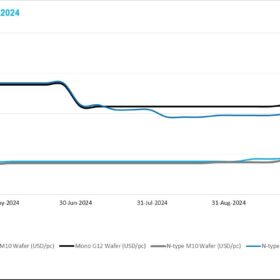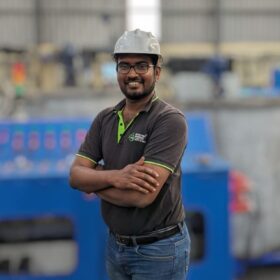Higher inventories weaken demand across global solar module markets
In a new weekly update for pv magazine, OPIS, a Dow Jones company, provides a quick look at the main price trends in the global PV industry.
Driving India’s green energy transition: Effective government policies and incentives
If India is to lead the global green energy revolution, the nation needs to take several key measures such as redirecting financial support from traditional energy sources to clean energy technologies, introduction of a well-structured carbon pricing mechanism, and incentivizing emerging technologies.
Concentrated solar power, a much cheaper solution than batteries for energy storage
By offering cheap energy storage, concentrating solar power has a huge potential. However, it requires international standards to become a competitive market proposition.
Wafer prices drop, inventory levels rebound despite operating rate cuts
In a new weekly update for pv magazine, OPIS, a Dow Jones company, provides a quick look at the main price trends in the global PV industry.
Understanding hybrid solar systems: A comprehensive guide
This comprehensive guide will walk you through the fundamentals of hybrid solar systems, their components, benefits, and how they compare to other solar power solutions.
The critical role of battery recycling in sustaining electronics and EV growth
While electronics and EV growth is a boon, it also underscores the need for sustainable growth and practices. Battery recycling is a key component of this sustainability, with environmental, economic and social benefits.
Navigating solar panel supply challenges through digitalization
High interest rates, excess warehouse inventory, and falling component prices have created a perfect storm for solar distributors since October 2023. BayWa re Solar Trade CEO Frank Jessel explains how the industry can embrace true digitalization to better navigate this volatility.
Skilling 100,000 ‘green energy warriors’ to drive India’s solar revolution
India’s journey in solar energy is nothing short of remarkable. Currently ranked fifth globally in solar power capacity, the nation has witnessed an exponential increase in installed capacity—from 21.65 GW in 2018 to an impressive 90.76 GW in 2023. Government initiatives are playing a crucial role in accelerating solar capacity expansion. The Solar Park Scheme, […]
Polysilicon prices remain stable ahead of U.S. Department of Commerce’s anti-dumping ruling
In a new weekly update for pv magazine, OPIS, a Dow Jones company, provides a quick look at the main price trends in the global PV industry.
Off-grid vs on-grid solar systems: Choosing the right solar solution for you
Both off-grid and on-grid solar systems have their unique benefits and challenges. Assessing your specific energy requirements, location, and budget will help you choose the right solar solution to harness the power of the sun effectively.















